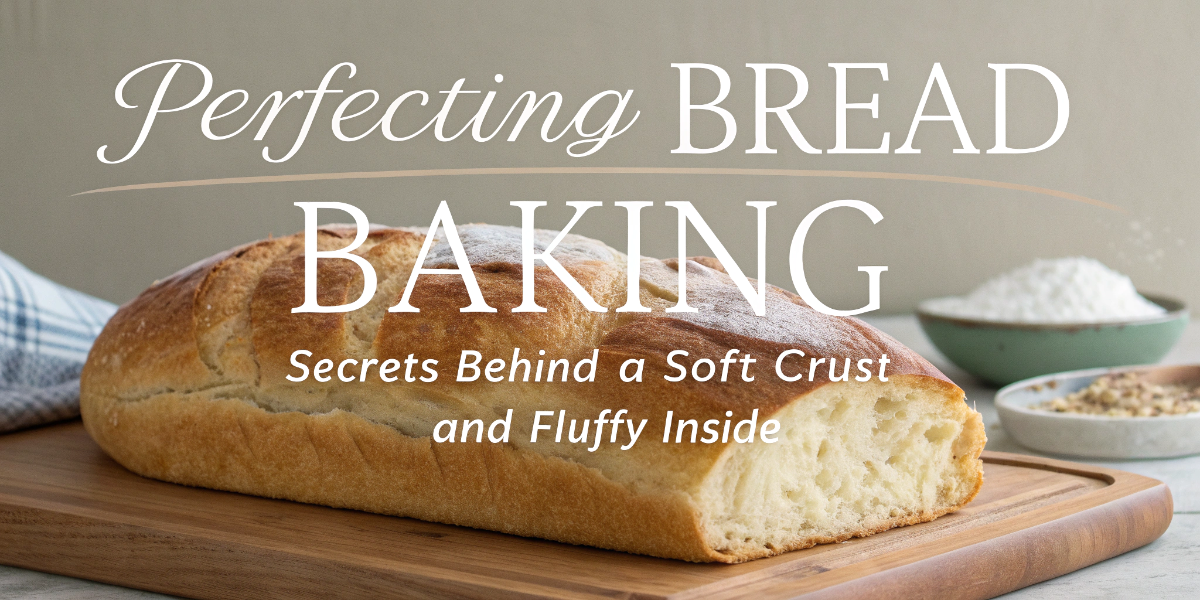Bread baking is one of the most satisfying skills any baker can master. The aroma of freshly baked bread, the golden-brown crust, and the soft, airy crumb inside are enough to make anyone fall in love with the art. Many aspiring bakers begin their journey by enrolling in Professional Bakery Courses in Chennai, where they learn the science and precision behind perfect baking. Creating the ideal loaf isn’t just about mixing flour, water, and yeast—it’s about understanding each ingredient’s role, mastering timing, and developing a sense of touch and intuition that only comes with practice and knowledge.
Understanding the Basics of Bread Baking
Bread is a simple yet intricate creation. The key ingredients—flour, water, yeast, and salt—work together to form the base of every loaf. The quality of flour, the ratio of water to flour (hydration), and the type of yeast used can drastically change the texture and taste of the bread. For instance, a high-protein flour creates stronger gluten strands, resulting in a chewier texture, while low-protein flour yields softer bread. The temperature of water and dough also influences yeast activity, which directly affects the rise and structure of the bread.
The Role of Kneading and Fermentation
Kneading plays a vital role in developing gluten—the protein network that traps air and gives bread its structure. Proper kneading ensures elasticity and strength, which help the dough rise evenly. However, over-kneading can lead to a dense texture. Once the dough is kneaded, fermentation takes over. During fermentation, yeast consumes sugars in the flour, producing carbon dioxide and alcohol, which expand the dough and create the soft crumb texture we love.
In modern baking, techniques like cold fermentation are used to enhance flavor and improve texture. This slow process allows the dough to rest in the refrigerator for several hours or overnight, resulting in a deeper flavor profile and a better rise during baking.
Secrets to a Soft Inside
A soft, fluffy interior comes from proper fermentation, hydration, and baking time. Using milk or butter in the dough adds richness and tenderness, while sugar can help with browning and sweetness. Many professional bakers recommend using the “windowpane test” to check if the gluten is well-developed. When stretched, the dough should form a thin, translucent membrane without tearing—indicating it’s ready for proofing.
Proofing, or the final rise before baking, is another crucial step. Under-proofed dough results in dense bread, while over-proofed dough collapses during baking. The ideal proofing environment is warm and slightly humid, allowing the dough to double in size while maintaining its structure.
Achieving the Perfect Crust
While the inside should be soft, the crust is what gives bread its character. Steam is the secret to achieving that perfect golden-brown crust. Introducing steam into the oven during the first few minutes of baking prevents the crust from forming too early, allowing the dough to expand fully. As the baking continues, the steam dissipates, and the crust begins to harden and develop color through caramelization and the Maillard reaction.
Another important factor is the oven temperature. Preheating the oven ensures the bread receives an instant burst of heat, helping it rise quickly—a process known as oven spring. Using a baking stone or a Dutch oven can also help retain heat and distribute it evenly, creating a crisp, professional-quality crust.
Learning the Craft Professionally
For those serious about mastering bread-making, professional training provides an invaluable foundation. Many learners enhance their skills by enrolling in Baking Classes Anna Nagar, where they receive step-by-step guidance from experienced instructors. These classes teach not only traditional techniques but also modern methods like sourdough baking, multi-grain loaves, and artisan bread styles. Students get to experiment with different flours, shaping techniques, and baking tools, gaining hands-on experience that helps them understand the art scientifically and creatively.
Practice, Patience, and Precision
Perfecting bread baking takes time and dedication. Even experienced bakers continue to refine their techniques by experimenting with hydration levels, fermentation times, and baking temperatures. Patience is key—each batch of dough teaches something new. Keeping a baking journal to record changes in recipes, proofing times, and results can help identify patterns and improve future bakes.
The Joy of Homemade Bread
There’s something deeply satisfying about slicing into a freshly baked loaf that you made from scratch. The process—from mixing and kneading to proofing and baking—creates a sense of accomplishment that no store-bought bread can match.
Whether you bake for your family or plan to open a bakery, understanding the secrets behind a soft crust and fluffy inside will elevate your skills and confidence. With the right techniques and consistent practice, anyone can master the art of perfect bread baking—one loaf at a time.
There’s something deeply satisfying about slicing into a freshly baked loaf that you made from scratch. The process—from mixing and kneading to proofing and baking—creates a sense of accomplishment that no store-bought bread can match. As more people explore the craft through Professional Bakery Courses in Chennai and specialized local training, baking has become not just a skill but a creative outlet that combines science, art, and passion.
Whether you bake for your family or plan to open a bakery, understanding the secrets behind a soft crust and fluffy inside will elevate your skills and confidence. With the right techniques and consistent practice, anyone can master the art of perfect bread baking—one loaf at a time.
In conclusion, baking bread is more than following a recipe—it’s about patience, timing, and passion. Each loaf teaches you something new, refining your craft with every batch. The aroma of freshly baked bread fills your space with warmth and pride, reminding you that perfection comes with persistence. Keep experimenting, trust the process, and enjoy the rewarding journey of becoming a true bread artisan.


